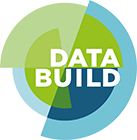Pandemic catalyses construction digital renaissance
If there is one benefit to be gleaned from the Covid-19 pandemic, it is that it has brought the construction industry to the brink of a digital renaissance.
“The emphasis on quality, safety and timely delivery of projects is greater now than ever before, and companies are being forced to accelerate their adoption of technology,” says Databuild CEO Morag Evans.
“It’s no longer a question of if companies will digitalise, but when and how they are going to bring their businesses into the 21st century and adapt their day-to-day operations to streamline the building process.”
Evans points to six emerging trends significantly impacting the construction industry and which participants should seriously consider incorporating into their business model if they wish to enhance their offering while improving efficiencies in the value chain.
Cloud computing
The Covid-19 pandemic has highlighted the need for real-time communication and information sharing in the construction industry, not only between the office and the job site, but also between various stakeholders such as architects, developers, suppliers and contractors.
Cloud computing not only makes it possible to check on the status of a project without having to physically visit the construction site, but also provides a holistic view of the project data which facilitates decision-making and reduces delays and budget overspends.
Internet of things
Closely allied to cloud computing is the internet of things (IoT). Internet-connected devices are placed around the construction site and enable the collection of all sorts of data around site conditions, activity and performance.
Additionally, biometric sensors can be worn by workers to track their temperature, heart rate and other vital signs. Safety officers are immediately notified if elevated readings are detected.
“IoT has become particularly appealing in the pandemic-ridden world as project managers look for effective screening measures to prevent the spread of the virus, and the implications for health and safety, as well as productivity, security and cost reduction are enormous,” says Evans.
Building information modelling
Building information modelling (BIM) is rapidly becoming a game changer in the construction industry.
More than just a three-dimensional representation of a building and its physical and functional characteristics, BIM can be used to generate exact quantities of materials required in the building and show how these will hold up over time. It also detects potential design clashes before construction begins, thus reducing change orders and rework, and simulates construction schedules so that each phase of the building process can be accurately planned. Any updates are communicated in real time to project participants, which means everyone works from the most up-to-date information.
“The primary benefit of BIM is that it enhances communication between professionals and contractors, streamlines time, cost and efficiency during the construction process, and helps all project participants produce a better product,” says Evans.
Virtual reality
The immersive visualisation qualities of virtual reality (VR) are enabling architects to better showcase their designs to not only clients, but also construction companies, thus enhancing their perception of a proposed building.
Additionally, construction business owners are increasingly using VR to train and upskill their construction workers in areas of safety, equipment operation and building systems installation.
Robots and drones
It won’t be long before drones (or unmanned aerial vehicles) become commonplace on construction sites. Drones provide construction teams with an overhead view of equipment, materials and people and are rapidly becoming integral to improving efficiencies on site.
For example, traditional site surveys can take weeks or even months to complete while a drone carries out the survey in minutes. Drones can also be used to deliver building materials, monitor project progress, conduct site inspections and identify potential safety hazards.
Blockchain
Simply put, blockchain is a ground-breaking tool used to record and track transactions, agreements or contracts across a network of peer-to-peer computers.
“As construction projects become increasingly complex and consequently, difficult to coordinate, failure to agree on project fundamentals can lead to mistrust and disputes among participants,” Evans points out.
“By utilising blockchain technology, construction companies can automate the contractual process to better manage supply chains and resources, and accelerate project delivery in a manner that is fair and transparent to all participants. Late payments and disputes are reduced and cash flow is improved, which is particularly beneficial to smaller contractors. The end result is holistically enhanced trust within the industry.”
It is clear that the future of a smarter, safer and more efficient construction industry lies in digital technology and it will soon become a necessity in any construction business. Undoubtedly, those who act quickly and decisively to embrace digitalisation are the ones that will emerge as industry leaders, Evans concludes.


